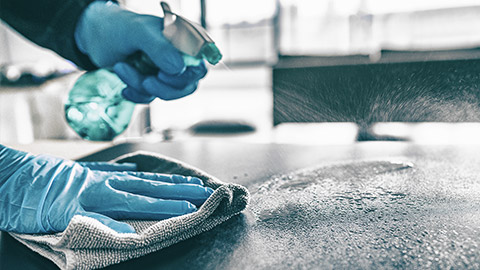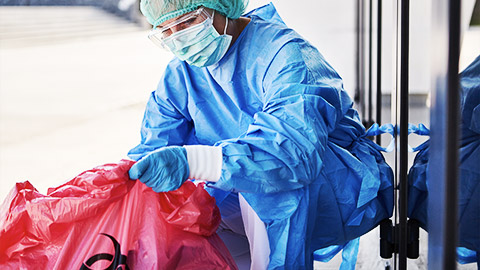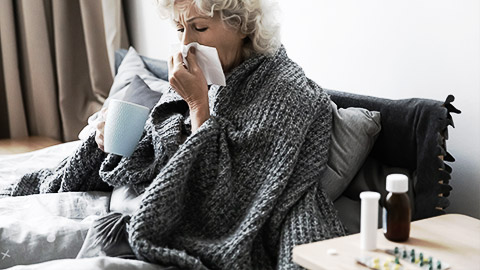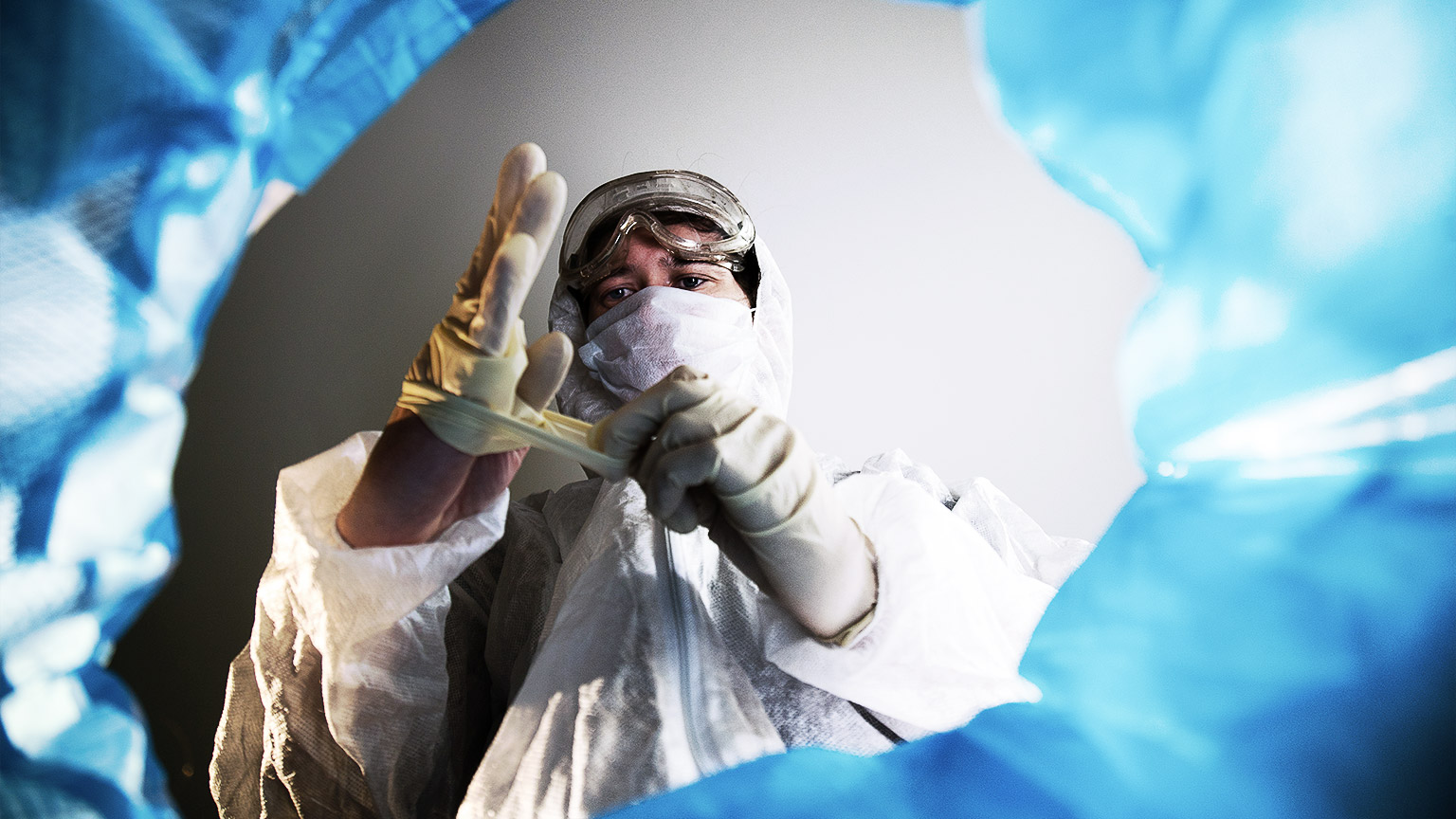Nailfiles.comProper disinfection leaves a surface highly unlikely to transmit infection or cause disease. Disinfection is only for non-living surfaces because disinfectants are damaging to living skin and may lead to irritation or allergic reactions.
Sterilization is the complete destruction of all microscopic life on a surface.
Keeping the environment clean is crucial in preventing and controlling the spread of infection. This is why you need to understand the basic principles and procedures that support maintaining a clean environment. Part of your duty-of-care obligations and your workplace health and safety responsibilities is to follow your organisation’s procedures for maintaining a clean environment. It may also be part of your job role responsibilities (depending on your position and job description or duty statement) to carry out cleaning tasks and activities. You will need to check your organisation’s procedures, especially in relation to workplace health and safety, and your job role description or duty statement for information about your specific duties in relation to maintaining a clean work environment. Your organisation will have its policies and procedures for environmental cleaning and for dealing with potential contamination, so ensure that you follow these in your day-to-day work
By the end of this topic, you will understand:
- Surface cleaning (routine and after a contaminating event)
- Disposing of contaminated waste
- Handling, transporting and processing linen
- Handling and cleaning client equipment
- Handling and disposing of sharps.
- Common infection hazards and risk
- Responding to infection hazards and risk

Regular and effective cleaning is an essential part of infection prevention and control. Cleaning generally refers to removing visible dirt, whereas sanitising, disinfecting and sterilization are deeper cleans that are used in high-risk areas and usually require removing unclean material that cannot be seen.
Surface Cleaning
All surfaces that may become dirty or contaminated must be cleaned, sanitised and disinfected regularly and after any potentially contaminating event such as a spill. ‘Sanitising’ means reducing the number of pathogens or germs, whereas ‘disinfecting’ means killing close to 100% of pathogens. Cleaning with detergent and warm water is used for routine cleaning, and this may be followed by using disinfectant if there is an infection or contamination present. In health and community services, the organisation usually has a schedule for routine cleaning and a procedure that must be followed after any event that might result in contamination, such as a blood spill.
The following table summarises the surface cleaning procedures.
| Procedure | Method |
|---|---|
| Routine surface cleaning |
|
| Wet areas* |
|
| Walls and fittings |
|
| Maintenance of equipment |
|
Equipment Cleaning
Procedures on how to clean equipment will be available from your organisation and your state/territory’s health department website. If instruments need to be sterilised, specific techniques using heat (e.g. boiling), chemicals or ultraviolet light may be used. Sterilising removes all microbial life to help prevent infections.
Managing Blood and Body Fluid Spills
Blood and other body fluid spills have to be cleared up as soon as possible using precautions such as wearing appropriate personal protective equipment (PPE), such as gloves, eye protection and an apron, and avoiding touching the fluids or inhaling any vapours. You will need to wash your hands after dealing with the spill and safely dispose of any waste. The area should also be thoroughly cleaned afterwards.
Cleaning bodily fluids
- 1) Isolate the area. 2) Wear gloves, a plastic apron and eye protection, such as goggles. 3) Soak up the fluid with disposable paper towels, or cover the spill with a granular chlorine releasing agent for a minimum of 10 minutes. 4) Scoop up granules and waste using a piece of cardboard (or similar), place in a plastic bag and dispose of appropriately. 5) Mix one part bleach to 10 parts water and apply to the area for 10 minutes. 6) Wash with hot water and detergent. 7) Dry the area. 8) Dispose of paper toweling and gloves appropriately. 9) Wash your hands. 10) Rinse any contaminated clothing in cold running water, soak in bleach solution for half an hour, then wash separately from other clothing or linen with hot water and detergent.
-
Some basic precautions for dealing with blood and body substance spills are:
- Using standard measures and PPE
- Clearing the area before it is cleaned
- Avoiding the generation of aerosols
Spills management needs to be flexible to cope with different types of spills. The management of spills is dependent on the:
- Nature of the spill
- Type of pathogen that might be involved
- Size of the spill
- Characteristics of the surface on which the spill occurred, for example, absorbency, roughness/ smoothness and the type of material from which it is made.
- Size of the affected area
Ensure that you use PPE when you clean blood and body fluid spills. For spots and drops, wipe the area with a paper towel and then clean it with detergent. For large spills, use an absorbent material such as paper towels to prevent the spill from spreading.
You will need to avoid generating splashes and spray when you clean, and after the spill is cleared, you will need to mop the area with disinfectant. After cleaning, wash the mop head, dry it and store it. You will have to wash, dry and store the bucket you use. Remember to dispose of any paper towel you use to clean up the spill in clinical waste disposal.
Practise cleaning surfaces
Choose a surface to clean, for example, a benchtop, floor, sink or desk.
You will need to:
- Follow a procedure for routinely cleaning this type of surface
- Select the appropriate cleaning equipment and materials to use
Procedures for routine environment(surface and floor) cleaning procedures 1.All cleaning solutions should be prepared immediately prior to use. 2.Work surfaces should be cleaned (wiped over) with a neutral detergent and warm water solution, rinsed and dried before, and after, each session or when visibly soiled. Spills should be cleaned up as soon as practical. 3.When a disinfectant is required for surface cleaning, the manufacturer’s recommendations for use and OH&S instructions should be followed. 4.Buckets should be emptied after use, washed with detergent and warm water, rinsed in hot water and stored dry – turn upside down. 5.Mops should be laundered or cleaned in detergent and warm water, rinsed in hot water then stored dry. Mop heads should be detachable or stored with mop head uppermost\ 6.All cleaning solutions should be prepared immediately prior to use.
Procedures for EQUIPMENT Cleaning
1)Clean and disinfect equipment after each use (as per normal infection prevention and control practice). 2) Equipment must be thoroughly cleaned (that is, scrubbing, using an instrument washer, and/or ultrasonic cleaner) so that they are free from any contaminants, protein residues and other stains, before processing through a steam-under-pressure bench-top autoclave.. 3) Clean water needs to be used for cleaning equipment. Water with a high mineral content is not suitable for rinsing because it can damage equipment. 4) Follow the manufacturer's instructions when using cleaning products on equipment. Common household detergents are not recommended due to their high foaming properties and difficulty removing residues. 5) Equipment, which is difficult to clean and sterilise, must be single-use. 6) Dry all items using a drying cabinet or with a lint free cloth (instruments must be properly dried - residual moisture may impede the sterilisation process and can damage instruments)..
Always ensure: Frequently touched surfaces including door handles, bedrails, bins, tabletops, kitchen areas, equipment of daily use and light switches These surfaces should be cleaned frequently (at least daily) or after any spills or when visibly dirty. Detergent solution (diluted as per manufacturer’s instructions) can be used, with the exact choice of detergent determined by nature of surface and likely degree of contamination. Detergent-impregnated wipes may be used for single pieces of equipment or small areas but should not be used routinely as a replacement for the mechanical cleaning process.
After you have completed this task, follow the procedure for cleaning that surface after it has potentially been contaminated.
For more information on how to clean equipment, visit the following links: ‘Cleaning and Waste Disposal Procedures – Infection Control’ from the Victorian Government Department of Health and Human Service https://scnv.io/EvYL
Clinical Waste

In your work you may need to handle clinical waste. Following the correct procedures for handling and disposing of clinical waste is essential for maintaining a clean environment and for preventing the spread of infection.
Clinical waste includes:
- Clinical materials, such as sharps, specimen waste, human tissue and blood
- Related waste materials, such as medications, chemicals and other toxins
- General waste (all other waste in the contaminated area) Waste should be separated and placed into clearly labelled, colour-coded containers
Disposing of Sharps
Sharps may include needles, syringes, single-use razors, lancets for measuring blood glucose levels or any object that is able to break the skin. You may not be using these as part of your job role, but you will probably come across them in the course of helping to maintain a clean and safe environment. Therefore, it is important for you to know how to handle and dispose of them correctly, especially when they have been in contact with blood or body substances. An appropriate sharps waste container should be accessible in any area where sharps may be used.
Some precautions you can take when disposing of sharps are:
- Disposing of sharps that you have used yourself (do not hand them to another person)
- Not re-sheathing needles
- Not bending or breaking needles
- Handling sharps with care at all times
- Using puncture-resistant containers
Linen and Laundry
If your role includes assisting with tasks such as bed making and changing soiled linen, you will need to know how to handle soiled linen and laundry items appropriately. Safe storage, laundering and disposal of linen is an important part of infection control.
Procedures for handling Linen
1) Ensure appropriate Personal Protective Equipment (PPE) is worn during the handling of any soiled linen in order to prevent exposure to blood or body substances; 2) ‘Bag’ any used linen or clothing into an appropriate laundry receptacle at the location of use; 3) Do not rinse or sort used linen or clothing in a patient-care area or in a domestic washing machine; 4) Place any linen or clothes soiled with body substances into a leak-proof laundry bag to ensure it is transported safely; 5) Always perform proper and thorough hand hygiene after handling used linen and clothing; and 6) Store clean linen in a clean, dry area where it will not be contaminated by dust, moisture, vermin, or aerosols. Ensure it is kept separate from used linen.
-
Points to remember: Some standard precautions when handling linen are:
- Placing soiled linen in a collection bag
- Not sorting linen in residents’ areas
- Placing heavily soiled linen in an impermeable bag
- Storing and transporting soiled and clean linen separately
- Not placing sharps, objects or materials in linen bags
- Following your organisation’s policies and procedures for handling linen and laundry
Here are the waste management procedures for the following waste materials Disposal of general waste 1.These are waste which is not capable of being composted, recycled, reprocessed or re-used. This includes incontinence pads, sanitary waste and disposable nappies. 2.It should be inspected in comparison to other waste materials to accurately determine the level of segregation. 3.All waste should be stored in secure areas until collected. 4.General waste is to be contained in bags which are labelled for general waste disposal Safe handling and disposal of contaminated waste Contaminated waste must not be disposed of in general waste. Contaminated waste such as clinical waste should be labelled with a black Biohazard symbol and the text “Clinical Waste” . Contaminated waste must be stored in a manner so as to reduce the chance of people and the environment being exposed to or affected by the waste. It must be bagged and stored in rigid-walled, leak-proof secondary containers, preferably in a bunded area with an impervious surface, e.g. concrete. stored in bags and containers with the appropriate colours and labels. • Kept so as not to cause environmental nuisance, e.g. by refrigerating potentially odorous materials. • Kept in an area not accessible by unauthorised people or animals Every clinical waste bin should have a liner. This liner shall be tied off prior to that bin being stored in a waste storage area • The clinical waste bin shall be locked either by a padlock or zip tie. • Clinical waste bins that are ready for collection by the waste disposal contractor will be placed in designated storage areas. Safe handling and disposal of sharps Disposing sharps and needles wearing proper PPE and as per the organisations policies and procedures Place sharps into a suitable container that: - is puncture-resistant, leak-proof, shatter-proof and able to withstand heavy handling - displays the universal biohazard label and has a label clearly indicating the nature of the contents - has an opening which is accessible, safe to use, and designed so that it is obvious when the container is full - is sealed when full or ready for disposal - can be handled without danger of the contents spilling or falling out.
You must keep ‘clean areas’ and areas where contamination is likely to occur separately; otherwise, contamination can spread to clean areas. You can work between contaminated areas and clean areas, but you must not allow contaminated items to enter a clean area. For example, do not use the same equipment or materials in both areas: Each area should have its own cleaning water, clothes and equipment to prevent cross-contamination.
Clean Areas
Clean and contaminated, or potentially contaminated, areas must be clearly marked. A clean area is a special area for uncontaminated items such as those that are sterile or have been disinfected. Never put contaminated items in a clean area. Records, Materials and Medicines Records, materials and medicines must be kept in a clean area. If they are stored in a potentially contaminated area, there is a risk of cross-contamination.
Contaminated Areas
A contaminated or dirty area is a place where any contaminated or potentially contaminated items, such as used instruments, have been placed.
For more information on the standards, processes and procedures for keeping the environment clean, you can check out the following links.
- ‘Principles of Environmental Cleaning: Product Selection’ from the Australian Commission on Safety and Quality in Health Care
- ‘The Process and Product Selection for Routine Environmental Cleaning – Flowchart’ from the Australian Commission on Safety and Quality in Health Care
- Cleaning Standard: For South Australian Healthcare Facilities by the Government of South Australia’s SA Health

Health and community workers, especially during emergency climates like a pandemic, are particularly at risk of contracting and transmitting infections because their work often involves close contact with people. This risk is increased further in residential settings, where workers are engaged in personal care tasks and clients are congregated together.
Health and community services work often entails working closely with clients and their families and may include providing physical support and care that requires touching, for example, helping a client dress, bath or go to the toilet. Activities like these carry increased risks of transmitting infections. Working in clients’ homes within the community also means that you may be exposed to unknown sources of infection.
Some terms that are commonly used when discussing infections in health and community work are outlined here:
- Hazard – something that can cause harm. Some examples of hazards include unsafe electrical wiring, chemicals, working on a ladder, high levels of noise, repeated use of a keyboard, a bully at work and stress.
- Risk – the chance, typically described as high or low, that a hazard will actually cause somebody harm. For example, exposed electric cables are a hazard because, if they are caught on a sharp object and the wiring is exposed, they create a high risk for someone to be injured.
- Risk control – minimising or eliminating risks as far as possible. Removing or eliminating a hazard will also remove or eliminate the risk associated with it.
Infection Control Measures
Control measures such as hand hygiene and wearing PPE are important, as are responsibilities and procedures for identifying, documenting and reporting infection transmission hazards within the physical environment and arising from work practices. All workers have a duty of care to follow these procedures. The hierarchy in most community services organisations includes line managers and/or workplace health and safety representatives. You should report concerns along those lines of communication within your organisation.
You should also consider the severity of the risk. This includes identifying the likely outcomes of exposure. For example, you need to determine if exposure is likely to result in death or serious illness. Your organisation will have policies and procedures for identifying, assessing and managing infection risks for your workplace. You will need to ensure that you always follow these to keep yourself and others safe from infection.
Assessing Risks of spread or contamination
When you are assessing risks, you can ask yourself questions to help you eliminate hazards and reduce the risk of infection.
The following are the types of questions you would ask:
- Can we remove or eliminate the hazard so that we can eliminate the risk? In the case of the risk of infection, can we remove or eliminate the pathogen?
- Can we put something else in place of the hazard?In the case of infection, can we replace the pathogen with something else? For example, if the pathogen is something like a toxic cleaning fluid, it could be replaced with a non-toxic cleaner, or if the pathogen is contained in easily infected foodstuffs, such as cheese, substitute a different food.
- Can we isolate or keep people away from the hazard? For example, can we keep people away from an area of the building that is contaminated?
- Can we use control measures to reduce the risk of harm? For example, can we restrict the number of people allowed into the building?
- Can we use control measures to protect people? For example, can personal protective equipment be used?
Activity
- Are there facilities, equipment and other features of the physical environment that could provide opportunities for spreading an infection that is transmitted through direct contact and airborne means?
- Are there any activities that could provide opportunities for spreading an infection?
- Is it reasonably practical to eliminate or remove the hazards? Why?
- What control measures could be used to minimise opportunities for potential infection through the physical environment?
- What control measures could be used to minimise opportunities for spreading infection through human contact?
- How effective do you think these measures would be in controlling and managing the risk of infection in this setting? Why?
Documenting and Reporting Activities That Put You, Clients, Colleagues and Others at Risk
Your organisation will have policies and procedures that you must follow to identify, document and report activities that present a risk of infection to you, your clients, your colleagues and other people. These are usually part of your organisation’s workplace health and safety policies and procedures. Your duty of care includes following these policies and procedures and being vigilant in identifying and reporting risks and hazards arising from work practices
Let's do a quick knowledge check by completing the quiz below, before you proceed further

